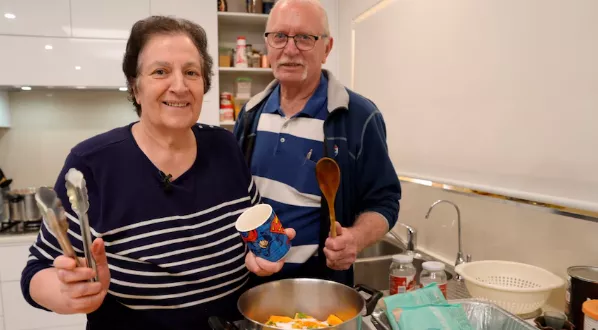A concerning new trend has emerged among low-income earners in Australia, with millions facing “severe” food insecurity, according to the 2024 Foodbank Hunger Report. The report highlights an alarming rise in meal-skipping as families struggle to afford basic groceries amid the ongoing cost-of-living crisis.
Disability Pensioner Feels the Strain
Toni Ottens, a disability pensioner from Adelaide, has spent years preparing meals for those in need. But recently, she has noticed a troubling increase in the number of families going without enough food.
“There are so many times I go to places, and the shelves are just empty — nothing left,” Ms. Ottens shared. She also admitted that her ability to cook for others has become more difficult as her own resources have diminished.
“We don’t have a lot of money… sometimes I can’t make as much food as I used to,” she said, adding, “I make do with what I’ve got.”
Ms. Ottens has long cooked for foster children and Puddle Jumpers, an organization that supports vulnerable youth. She carefully budgets, sourcing ingredients on sale, but worries that without her contributions, many families could miss essential nutrients.
Her observations mirror the findings of the latest Foodbank report, which sheds light on the growing issue of food insecurity affecting millions across the country.
Millions Struggle with ‘Severe’ Food Insecurity
The 2024 Foodbank Hunger Report, which surveyed over 4,000 Australians, reveals that 3.4 million households across the nation are grappling with food insecurity. Even more troubling, 2 million of these households are facing “severe” food insecurity, meaning they frequently skip meals or eat less due to a lack of funds.
The report found that 97% of households experiencing severe food insecurity worry about running out of food before they can afford more. This figure has increased from 94% in 2022, showing the deepening impact of the crisis.
Additionally, 79% of these households reported running out of food entirely and being unable to purchase more.
The survey, which included responses from Australians of various ages and locations, paints a grim picture of the nation’s food crisis, revealing that the total number of food-insecure households now surpasses those in both Melbourne and Sydney combined.
Low-Income Earners Hit Hardest
While the overall rate of food security has slightly improved in the past year, the report highlights a “two-speed recovery,” where high and middle-income earners are seeing improvements, while those earning less than $30,000 a year are worse off.
Foodbank CEO Breanna Casey emphasized the severity of the situation, noting that nearly half (48%) of low-income households are now experiencing food insecurity.
“The most concerning statistic is that this number is up by 5% compared to last year, marking the highest rate of food insecurity among low-income earners since the cost-of-living crisis began,” Ms. Casey said.
“They’re having to make tough decisions about what they eat, when they eat, or whether they eat at all. Low-income households bear the brunt of economic shocks and natural disasters, and that’s exactly what we’re seeing here.”
The report also revealed that almost half of these households have cut back on fresh produce and protein, vital components of a healthy diet. A staggering 82% of respondents cited rising costs of food and housing as the primary factors driving food insecurity.
Rising Costs Exacerbate Crisis
Ms. Casey pointed to food inflation as a major pressure point for low-income families. “With such a high proportion of everyday expenses now going towards basic essentials like food and housing, it’s no surprise that food inflation is hitting low-income households the hardest,” she said.
The soaring cost of living has left many Australians struggling to make ends meet, and support systems, while available, have not fully alleviated the growing financial pressures.
Calls for Increased Support Payments
Ben Phillips, an economic and social researcher from the Australian National University, believes that increasing JobSeeker payments could significantly ease the burden on low-income Australians.
“Increasing JobSeeker would make a substantial difference for those most vulnerable, particularly the lowest income earners who are often living in poverty or financial stress,” Mr. Phillips explained.
He added that an increase in JobSeeker payments has been overdue for the past two decades. “Even a modest increase would have a meaningful impact on the lives of about a million Australians,” he said.
Government Action and Social Support
Minister for Social Services Amanda Rishworth acknowledged the current struggles faced by Australians, highlighting the government’s efforts to address these issues.
Since the 2022 federal election, the JobSeeker base rate has risen by $135 per fortnight, according to Ms. Rishworth.
“We understand that Australians are grappling with the rising cost of living. That’s why we’ve made significant investments to strengthen our social security safety net,” she said. “Our government has committed an additional $11.5 billion to the social security system across the 2024-25 and 2023-24 budgets.”
While these measures are welcomed, the latest Foodbank Hunger Report indicates that much more needs to be done to address the growing food insecurity crisis facing millions of Australians. As inflation continues to rise and more households struggle to put food on the table, the urgency for effective solutions remains high.
Related topics:


























